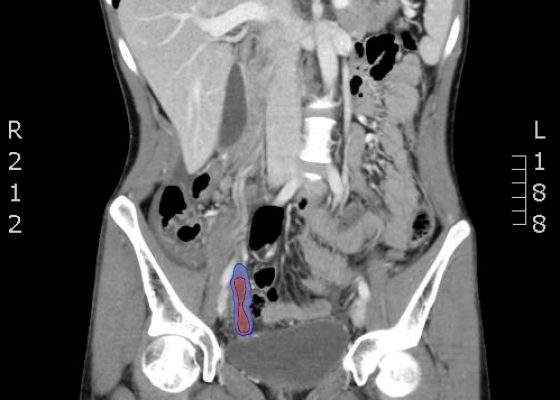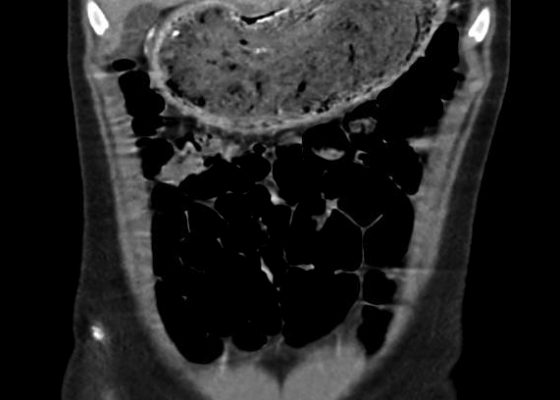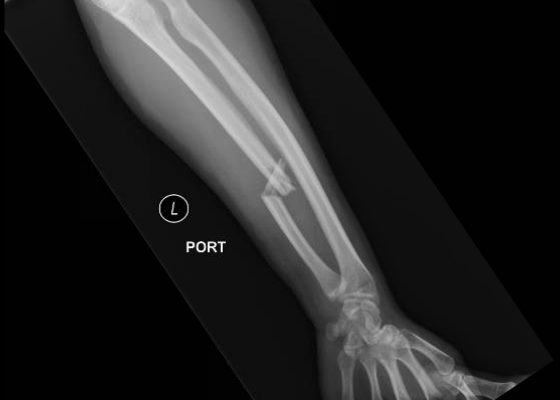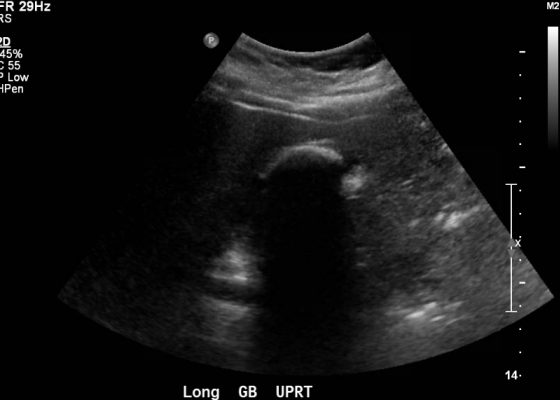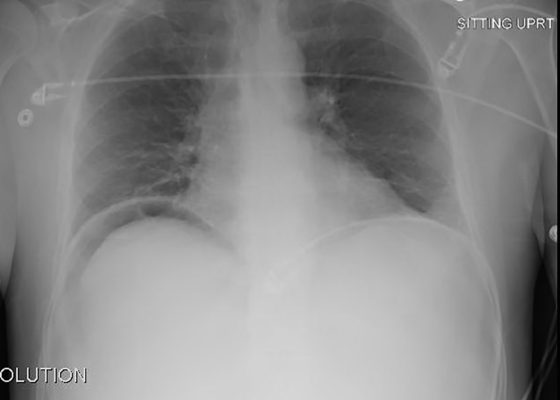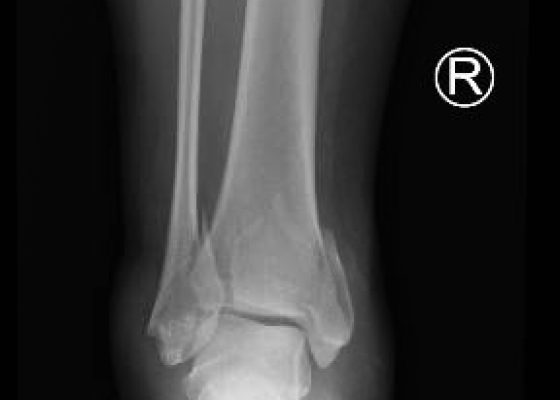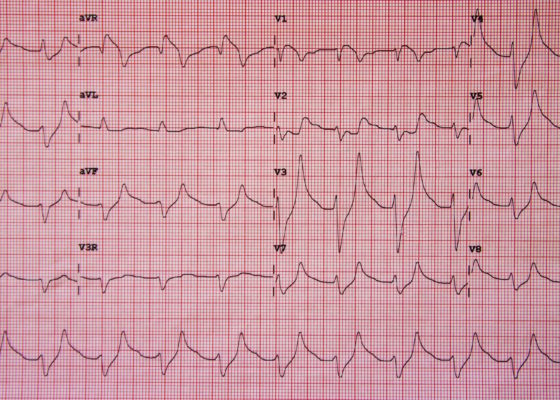Visual EM
Computed Tomography Diagnosis of Appendicitis
DOI: https://doi.org/10.21980/J8F30NThe CT abdomen/pelvis with IV contrast shows a dilated appendix (see red outline) with thickened, hyperenhancing wall (see blue outline) best visualized in the axial and coronal planes.
Intracranial Hemorrhage Following a 3-week Headache
DOI: https://doi.org/10.21980/J89885The patient’s head CT showed a significant area of hyperdensity consistent with an intracranial hemorrhage located within the left frontal parietal lobe (red arrow). Additionally, there is rightward midline shift up to 1.1cm (green arrow) and entrapment of the right lateral ventricle (blue arrow).
Gastric Bezoar
DOI: https://doi.org/10.21980/J85K5WIn the abdominal radiograph, a nonspecific and non-obstructive bowel gas pattern with no air-fluid level was noted, however the stomach was distended with soft tissue. The CT abdomen/pelvis revealed a distended stomach with undigested heterogeneous contents (presumed bezoar).
Monteggia Fracture in an Assault Patient
DOI: https://doi.org/10.21980/J81S3ZOn the axial elbow x-ray, the radial head (red arrow) is dislocated anteriorly from the humerus; the humeroulnar articulation is intact. On the AP forearm x-ray, there is a closed, displaced, comminuted fracture of the ulna (blue arrow).
Cholelithiasis: WES Sign
DOI: https://doi.org/10.21980/J8X300Abdominal ultrasound showed the classic presentation of the Wall-Echo-Shadow (WES) sign. The superficial aspect of the gallbladder wall is represented by a hyperechogenic curve. Below this, bile fluid is represented by hypoechogenicity. Underneath the bile fluid is the echo of the dense border created by the collection of gallstones, represented by a hyperechogenic curve. Due to the high density of the gallstones, nothing deeper can be visualized (including other gallstones or the far end of the gallbladder); this is the shadow.
Hill-Sachs Deformity
DOI: https://doi.org/10.21980/J8Z59D In the post-reduction film, there is a lateral depression in the humeral head (arrow, a Hill-Sachs deformity). A Hill-Sachs deformity is a cortical depression (fracture) in the humeral head that forms as the humeral head hits the glenoid rim during the dislocation.
Perforated Duodenal Ulcer
DOI: https://doi.org/10.21980/J8TG64In the chest radiograph, there was obvious free air under the both the right diaphragm (above the liver) and the left diaphragm, consistent with pneumoperitoneum.
Trimalleolar Fracture
DOI: https://doi.org/10.21980/J8PP46Anteroposterior (AP), lateral, and oblique x-ray views were obtained. The AP view revealed a displaced spiral fracture of the lateral malleolus (red) and a vertical fracture of the medial malleolus (blue). The lateral view revealed a displaced fracture of the posterior malleolus, tibial plafond (yellow), and the oblique view showed widening of the distal tibiofibular syndesmosis (green). CT scans confirmed trimalleolar fracture, annotated with the same colored lines (red, lateral malleolus; blue, medial malleolus; yellow, posterior malleolus).
Hyperkalemia on ECG
DOI: https://doi.org/10.21980/J8K017Initial ECG shows tall, peaked T waves, most prominently in V3 and V4, as well as QRS widening. These findings are consistent with hyperkalemia, which was promptly treated. Follow-up ECG post-treatment shows narrowing of the QRS complexes and normalization of peaked T waves.
Perilunate Dislocation
DOI: https://doi.org/10.21980/J8F59RIn the left lateral wrist x-ray, the lunate is dislocated from the rest of the wrist bones but still articulates with the radius. The capitate does not sit within the distal articulation of the lunate and is displaced dorsally. Additionally, a line drawn through the radius and lunate fails to intersect with the capitate. This is consistent with a perilunate dislocation. This is compared to a lunate dislocation, where the lunate itself is displaced and turned ventrally (spilled teacup) and the proximal aspect does not articulate with the radius.

